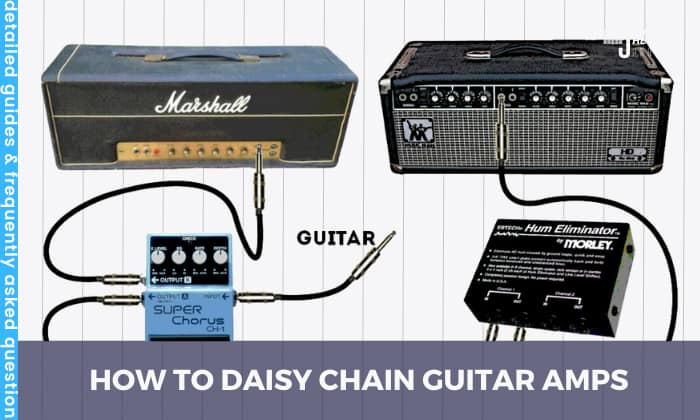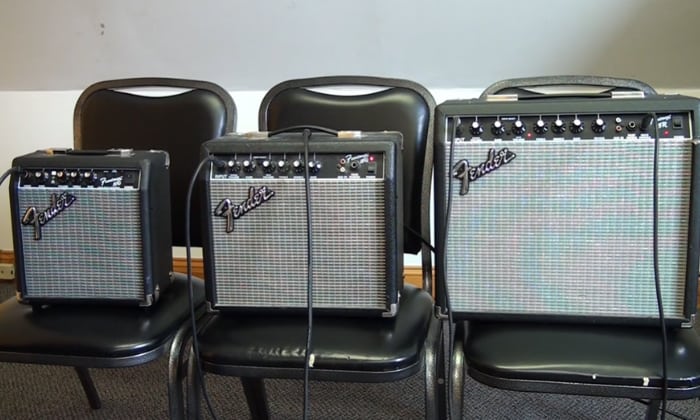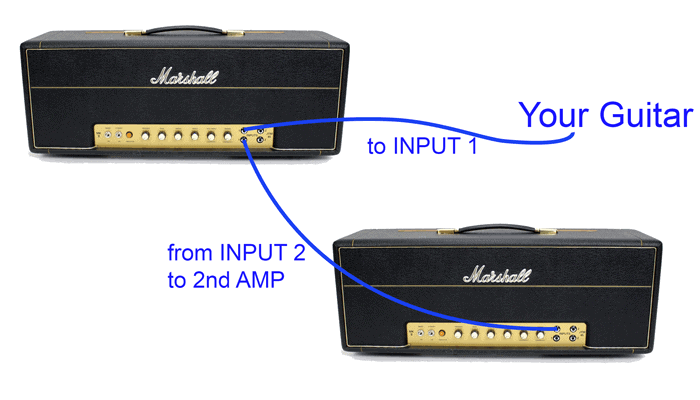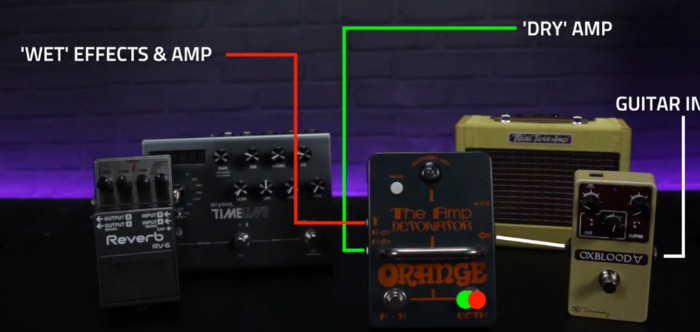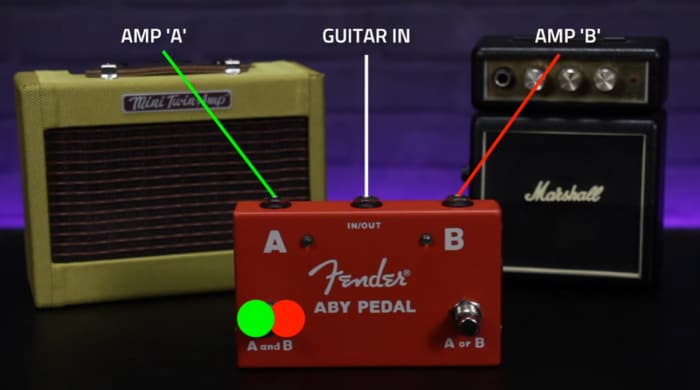A popular way of creating a massive sound with high quality is to daisy-chain guitar amps. However, if done incorrectly, you may end up damaging the amps or adversely affecting the wound quality.
So, how to daisy chain guitar amps? Keep reading to find out the various methods to ensure your riffs sound clean and impressive.
Table of Contents
Ways to Daisy Chain Guitar Amps
Daisy-chaining is a method of connecting all the audio devices together so that they share the same source. Doing so produces fuller, more complex, and more pronounced tones.
This technique is also helpful for musicians who need more control over the volume during a performance or recording using multiple smaller amps.
The common methods of daisy chaining amplifiers are summarized below.
| Method | Pros | Cons |
| Direct Serial Connection | ● Straightforward setup
● Suitable for beginners |
● May produce phasing issues.
● Sound quality may not be ideal |
| Effects Pedal Connection | ● Allows modular placement of effects between the preamp and power amp stages.
● Prevent your playing from sounding mushy ● Great for bassists
|
● Not all pedals have two outputs
● If paired with a buffered AB/Y splitter, the entire setup can be expensive |
| Buffered AB/Y-Cable Splitting | ● Makes it possible to either play through two amps simultaneously or one at a time
● Amps can be arranged in any order or configuration. |
● Buffered AB/Y splitters are expensive.
● AB/Y splitters without isolated outputs may cause buzzing sounds
|
1. Direct Serial Connection
This is the simplest way to daisy-chain your guitar amps, as the steps are pretty straightforward.
However, this method creates a phenomenon called ‘phasing’ wherein the sounds produced by the amplifiers seem out of phase with one another, leading to tones sounding incomplete and not well-rounded.
If you are curious how to do this method of daisy-chaining, check out the steps below:
- Connect your guitar to the input of the first amplifier in the chain using a standard instrument cable.
- Use a second instrument cable to connect the first amp’s output to the second amp’s input. This creates a simple serial connection.
- Repeat as needed. If you have more amps, continue to connect two guitar amps by connecting the output of each amp to the input of the next amp in the chain.
- Connect the output of the last amp in the chain to your speakers or the input of a mixer, depending on your setup.
- If phasing occurs, reversing the cable connection should fix the problem.
2. Effects Pedal Connection (Wet/Dry Setup)
If you want modular placement of effects and get a clearer sound, a great method is using an effect pedal with stereo outputs. It’s also ideal for bassists, as they can create an illusion that there’s a guitar playing along with them.
The steps for creating an effects pedal connection are as follows:
- Connect your guitar to the foot pedal using a standard jack cable.
- Use another cable to connect the pedal output to the AB/Y box with an isolated output.
- Connect the A output of the AB/Y box to the first amp; this will be our “Dry” effect.
- Link the B output of the AB/Y box to the second amp for the “Wet” effect.
For those who don’t have an AB/Y splitter, it’s okay to forgo this appliance, provided that your effect pedal has two outputs. In this case, the setup should look like this:
- The guitar is connected to the foot pedal, whose “Effect Out” socket should be linked with the input of the first amplifier.
- Connect the “Dry Out” output on the pedal to the input of the second amplifier.
As you can see, this setup is quite complicated. What’s more, adding an AB/Y splitter into the configuration means a higher overall cost. Plus, you may not be able to find an effect pedal with both “Dry Out” and “Effect Out” outputs.
3. Buffered AB/Y Box
If you want to send your guitar signal to two amps simultaneously rather than in a series, you can use a buffered AB/Y box, which ensures signal strength and faithful sounds.
However, a buffered AB/Y box, especially those with a phase reverse switch, can be expensive. Plus, those without an isolated output may cause ground loops, which results in annoying humming or buzzing sounds.
If you are interested in using this daisy chain method, see the steps below:
- Connect your guitar to an AB/Y box, which splits the signal into two.
- Plug in the A output of the AB/Y splitter and the input of the first amp.
- Use another cable to link the B output of the AB/Y box to the second amp.
This allows you to play through two amps simultaneously without a strict serial signal path.
- Ensure the AB/Y box is set so that signals will come from both the A and B ports if you want to play both amps simultaneously.
If not, simply change the setting so that you’re either playing from the A or B port.
- Should your playing sound out of phase, click the “Phase” button on the AB/Y splitter. However, this may not be available on cheaper units.
Conclusion
Knowing how to daisy chain guitar amps is definitely a great advantage and opens up a new world of possibilities for those exploring and honing their craft. Enjoy the journey of creating unique, complex tones and exploring and improving your skills through daisy-chained sound effects.
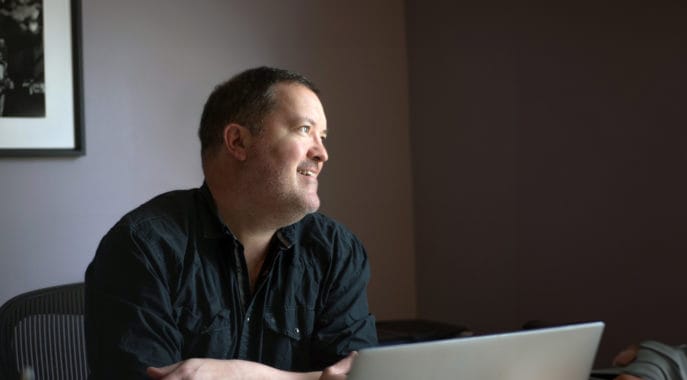
Sam Stephenson is a writer who grew up in Washington, North Carolina. He was 2010 and 2015 ASCAP Deems Taylor / Virgil Thomson Prize winner and a 2019-2020 Guggenheim Fellow in General Nonfiction. His books have been published by W.W. Norton, Alfred A. Knopf, and Farrar, Straus and Giroux
